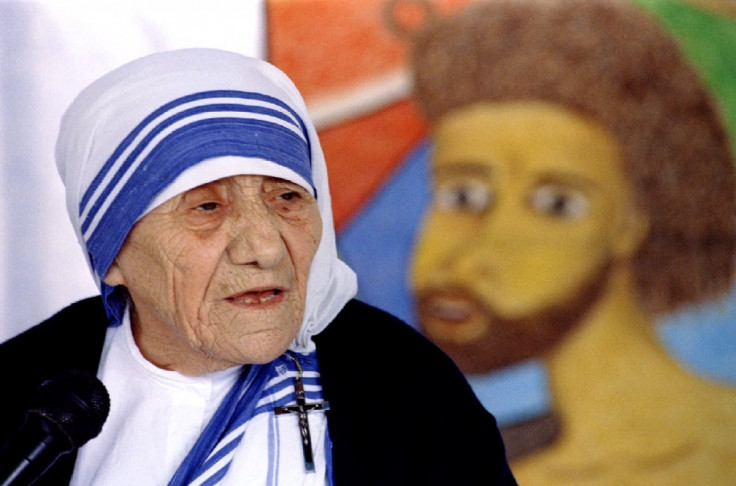Mother Teresa to be made saint after Pope Francis recognises miracle

Mother Teresa of Calcutta is to be made a saint of the Catholic Church after Pope Francis signed off on a miracle attributed to her.
Italian paper Avvenire, affiliated with the bishops' conference, said the Pope approved the miracle during an audience on 17 December, the day of his 79th birthday.
The miracle concerned the "scientifically inexplicable" cure on 9 December 2008 of a man, now 42-year-old, in Brazil. He was reduced in a coma by multiple brain abscesses and already had a kidney transplant and immunosuppressive therapy.
The Vatican ascertained that his wife's prayers for Mother Teresa's intercession were responsible for the cure.
Beatification by the Catholic Church requires one miracle, while becoming saint requires proof of at least two miracles.
Born from Albanian parents in Macedonia in 1910, Mother Teresa's real name was Anjeze Gonxhe Bojaxhiu. She founded the Missionaries of Charity to help the poor on the streets of Calcutta and the religious order later spread around the world.
Mother Teresa was beatified in 2003 after Pope John Paul II accepted as authentic a miracle attributed to her. The curing of an Indian woman suffering from an abdominal tumour was deemed to be the result of the supernatural intervention of the nun.
However, Indian rationalists challenged the claim of Missionaries of Charity, who said a photograph of Mother Teresa, placed on the stomach of 30-year-old Monica Besra, cured her of tumour. Prabir Ghosh, general secretary of the Indian Rationalist and Scientific Thinking Association, said Besra continued to receive treatment after the nun died, according to interviews with several doctors.
In recognition to her work to help the poor in the slums of Calcutta, Mother Teresa was awarded the Nobel Prize. She died on 5 September 1997 aged 87. At the time of death, the Indian-based order had nearly 4,000 nuns and ran roughly 600 orphanages, soup kitchens, homeless shelters and clinics. Pope Francis is a big fan of Mother Teresa and during a visit to Albania he even confided to his interpreter that he feared the little woman's fortitude.
When he was Archbishop, Pope Francis, then Jorge Mario Bergoglio, met the nun during a 1994 bishop synod at the Vatican.
"Bergoglio had Mother Teresa behind him, nearby, and he heard her intervene often with great strength, without letting herself in any way be intimidated by this assembly of bishops," the Vatican spokesman, the Rev. Federico Lombardi, later recounted. "And from that he developed a great esteem for her, as a strong woman, a woman able to give courageous testimony."
The second miracle
The miracle concerned the "scientifically inexplicable" cure on 9 December 2008 of a man, now 42-year-old, in Brazil.
The man, an engineer, had just got married when doctors found eight abscesses in his brain. His situation worsened with the emergence of an hydrocephalus condition, which forced the doctors to perform medical surgery. He was induced in a coma, but the surgery was delayed due to technical problems. After just half an hour, the doctors was startled to find the patient awake, sitting on his bed and without any symptoms asking: "What am I doing here?"
The doctors told the medical board responsible to analyse the episode that "I've never seen a similar medical case". "In 17 years of practice, all cases similar to this one have died. I can't give any scientific or medical explanation," he said.
Further exams showed that the patient had completely healed and he could go back to work and his everyday life.
The Vatican ascertained that his wife's prayers to Mother Teresa were responsible for the cure. The woman asked friends and family to pray the late nun to whom she was a devout. "Ask Mother Teresa to heal him", she said.
During that half an hour between the failed surgery and the healing, a priest and the patient's family were praying Mother Teresa in the hospital's chapel.
© Copyright IBTimes 2025. All rights reserved.





















